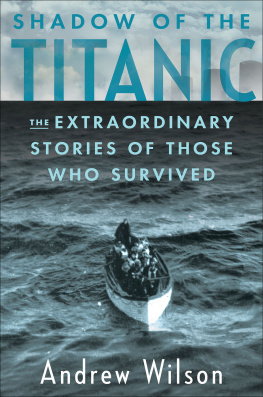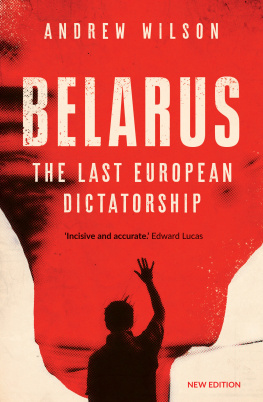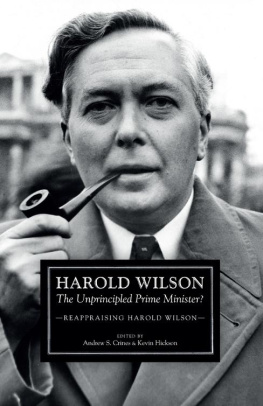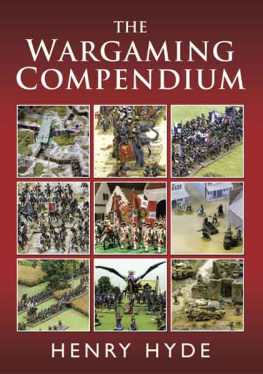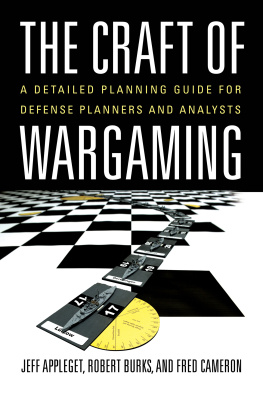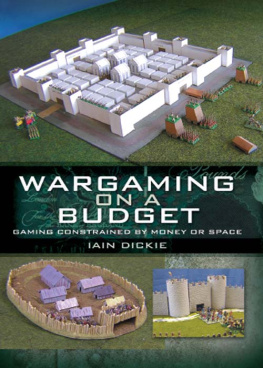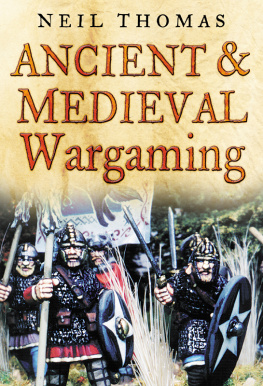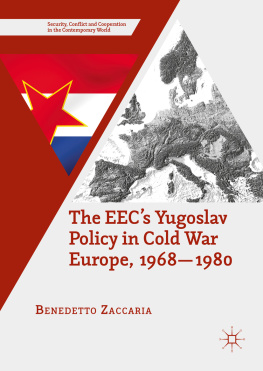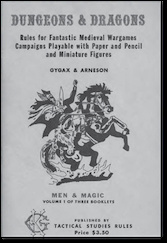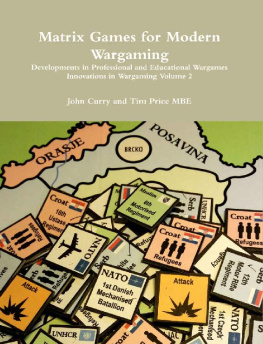Andrew Wilson - The Bomb and the Computer: The History of Professional Wargaming 1780- 1968
Here you can read online Andrew Wilson - The Bomb and the Computer: The History of Professional Wargaming 1780- 1968 full text of the book (entire story) in english for free. Download pdf and epub, get meaning, cover and reviews about this ebook. year: 1969, genre: History. Description of the work, (preface) as well as reviews are available. Best literature library LitArk.com created for fans of good reading and offers a wide selection of genres:
Romance novel
Science fiction
Adventure
Detective
Science
History
Home and family
Prose
Art
Politics
Computer
Non-fiction
Religion
Business
Children
Humor
Choose a favorite category and find really read worthwhile books. Enjoy immersion in the world of imagination, feel the emotions of the characters or learn something new for yourself, make an fascinating discovery.

- Book:The Bomb and the Computer: The History of Professional Wargaming 1780- 1968
- Author:
- Genre:
- Year:1969
- Rating:4 / 5
- Favourites:Add to favourites
- Your mark:
The Bomb and the Computer: The History of Professional Wargaming 1780- 1968: summary, description and annotation
We offer to read an annotation, description, summary or preface (depends on what the author of the book "The Bomb and the Computer: The History of Professional Wargaming 1780- 1968" wrote himself). If you haven't found the necessary information about the book — write in the comments, we will try to find it.
The author was the Defence Correspondent to The Observer Newspaper. He was granted special access to the Pentagon and other secret sources of information and interviewed many leading experts on policy-making on both sides of the Atlantic. The result was an authoritative and readable work on the subject that was directly related to the precarious balance of power in the Cold War. The book demonstrates how crucial war games were in American weapon development, foreign policy and war fighting plans during the dark days of the Cold War.
The book is published by the History of Wargaming Project as part of a series to make key developments in wargaming available to the modern enthusiast.
Andrew Wilsons 1968 book was probably the first to bring together in a systematic way a comprehensible account of the strategic wargames that were played in the dark corridors of offices of the war planners around the world. In the days of the Cold War, the world was on the brink of World War III. Wargames were being played to refine warfighting plans, but also to help develop political strategies to avoid getting into an Armageddon-type confrontation. These strategists had written about their work, but usually in obscure journals in language only suitable for others of their craft to comprehend.Wilsons book started with a description of the early kriegsspiel game played by the Germans as a tactical training tool. It then showed how wargames became broadly accepted as a military planning tool during the 19th century. It should be remembered that, in 1968, Wilson was probably unaware of the wargaming movement that was being galvanised by the writing of Donald Featherstone and others. Wilson argued that wargames can be invaluable planning tools depending on the game mechanics and the nature of the assumptions made to produce the rules.Wilson then moved onto how operations research influenced the senior commanders in World War II, paving the way for greater use of games in the new Cold War of the 1950s onwards. The book describes how the drive to mathematically-based games sometimes produced games that were less effective than believed. His account of the political military games, such as those by the RAND corporation, was particularly interesting. Few accounts of these games have made their way into the public domain in an understandable format. Thomas Allens book War Games (also published by the History of Wargaming Project) covers some of the same ground, but not in such a detailed and analytical fashion.The book also discussed the growing role of the new computer technology in supporting and even replacing manual wargames. It is interesting to note that at the time of reprinting this book, there is a resurgence of manual wargames for training and analysis. Modern armed forces are starting to use a blended mix of technology and manual wargaming methods to fulfil operational analysis and training needs. The new generation of manual based wargames with their maps, counters and combat tables would be familiar to anyone who had played SPI or Avalon Hill wargames of the 1970s onwards.The work concludes on a personal note, with Andrew Wilson observing how the wargames had produced successful strategies for American forces on the battlefields of Vietnam. However, he noted that these wargames did not take account of the toll of civilian casualties, the slow destruction of the agricultural base of the country and the demoralisation in the South Vietnam capital of Saigon. His worlds were prophetic: America won on the battlefield, but lost the war due to a failure of morale. It was only later developments in wargames in the 1980s and 1990s that started to take greater account of these human factors.This work is a useful addition to the History of Wargaming Project and it is hoped the modern reader finds this early work about those strategic wargames that could have led to Armageddon of interest.
Andrew Wilson: author's other books
Who wrote The Bomb and the Computer: The History of Professional Wargaming 1780- 1968? Find out the surname, the name of the author of the book and a list of all author's works by series.




